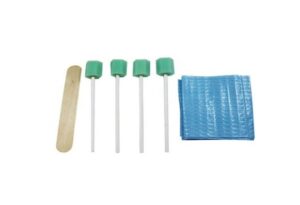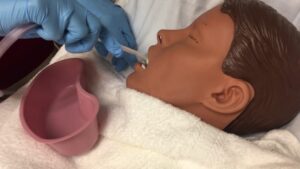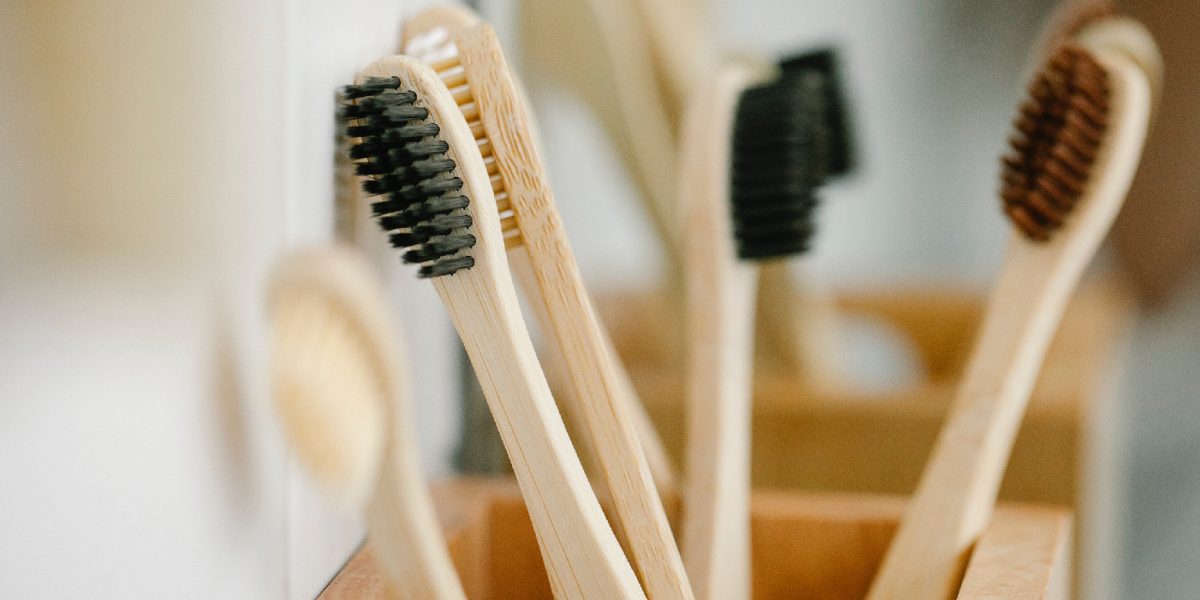What is Oral Care?
Oral care is a fundamental part of nursing care and failure to provide it can have a negative effect on health and wellbeing of the patient.
Oral health is essential to good health and quality of life, and is defined by the World Health Organization (2018) as “a state of being free from mouth and facial pain, oral and throat cancer, oral infection and sores, periodontal (gum) disease, tooth decay, tooth loss, and other diseases and disorders that limit an individual’s capacity in biting, chewing, smiling, speaking, and psychosocial wellbeing”.

Reasons for poor oral hygiene
There are many reasons people may have poor oral hygiene, including:
- Inability to carry out oral care, for example due to stroke, arthritis, arm injury, head injury, surgery;
- Lack of knowledge or motivation;
- Lack of access to dental services;
- Lack of money to afford oral care equipment;
- Medicines, such as anticholinergic drugs and oxygen therapy, that cause a dry mouth or an unpleasant taste;
- Poor diet or reduced fluid intake
- Nil by mouth due to surgery or dysphagia;
- Xerostomia – sensation of a dry mouth – which frequently affects older people;
- Surgery, radiotherapy and/or trauma to the head and neck
Benefits of a clean mouth
Providing effective mouth care to patients can:
- Promote self-esteem and comfort
- Improve appetite and enjoyment of food and drink – poor nutrition associated with oral problems can slow recovery and increase length of hospital stay
- Prevent halitosis;
- Reduce the risk of hospital-acquired pneumonia
How often should oral care be carried out?
Teeth should be brushed at least twice a day with a fluoride toothpaste (Public Health England, 2017; National Institute for Health and Care Excellence, 2016). They should always be brushed last thing at night.
In hospital and care homes frequency can be determined using an oral assessment tool and depends on individual need. Patients receiving oxygen therapy, nil by mouth or those who are vomiting will require frequent mouth care. Nurses should prompt and support patients to carry out oral care and undertake oral care for those who cannot maintain a clean mouth for themselves.
The procedure for oral hygiene
Equipment
- Pen torch;
- Receiver;
- Tissues;
- Tongue depressor;
- Non-sterile disposable gloves and plastic apron;
- Toothbrush – this is the most effective means of removing plaque and debris. A paediatric soft toothbrush can be used for patients who have a sore mouth;
- Toothpaste;
- Assessment and recording tools.

Procedure
- Explain the procedure to the patient and gain their consent to carry it out.
- Screen the patient to ensure privacy during the procedure. Oral hygiene should take place in the bathroom, where possible.
- Wash and dry your hands.
- Assemble equipment.
- Ask the patient to sit in an upright position or help them to do this. If the patient is unable to sit up, the procedure should be undertaken with the patient’s head turned to the side to prevent choking and suction equipment should be available.
- Wash and dry hands again, and put on non-sterile gloves and a plastic apron.
- Select an appropriate toothbrush and wet the head. Apply a pea-sized amount of toothpaste to a gloved finger and rub it into the toothbrush – this will prevent a large amount of toothpaste from dropping into the patient’s mouth. Non-foaming toothpaste should be used for patients with dysphagia (swallowing problems).
- Use a gentle, rotating movement to clean the inner, outer and biting surfaces of the teeth (Fig 3). You can also gently brush the surface of the tongue and the gums. Brushing should take approximately two minutes, or 30 seconds per quarter of the mouth.
- Allow the patient to spit out excess toothpaste. They should not rinse their mouth with water as this dilutes the fluoride in the toothpaste, which protects teeth from decay (PHE, 2017).
- Offer the patient tissues to wipe their mouth.
- Apply moisturizer to the patient’s lips if required. Dry-mouth gel can be used to alleviate oral dryness.
- Check the patient is comfortable.
- Clean the toothbrush and allow it to air dry.
- Remove gloves and apron, and dispose of equipment according to local policy.
- Wash and dry your hands.
- Document care given and any observations of the patient’s mouth

ORAL CARE FOR UNCONCIOUS PATIENT
- Gather supplies.
- Check identification bracelet or name tag.
- Introduce self, tell patient what you are going to do, provide privacy.
- Wash hands, put on gloves.
- Raise bed to comfortable height to perform oral care and raise head of bed 30 degrees.
- Place a towel under patient’s head and turn patient’s head toward you.
- With one hand, use a tongue depressor to hold patient’s mouth open. With other hand, clean teeth, gums, and tongue.
- Wipe or suction secretions from patient’s mouth.
- Reposition patient, lower bed, remove gloves, and wash hands.




